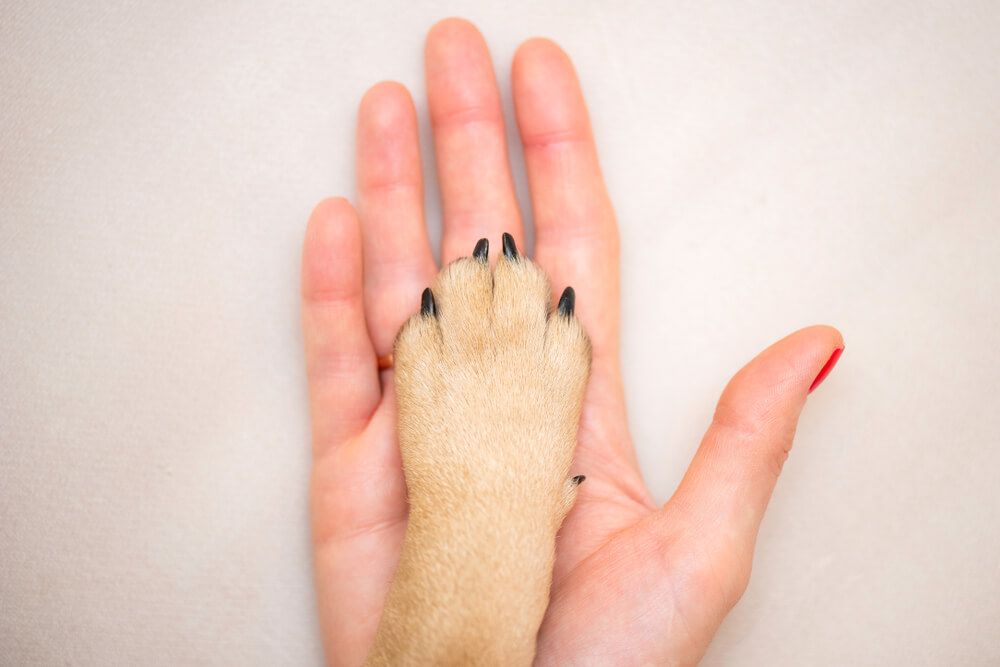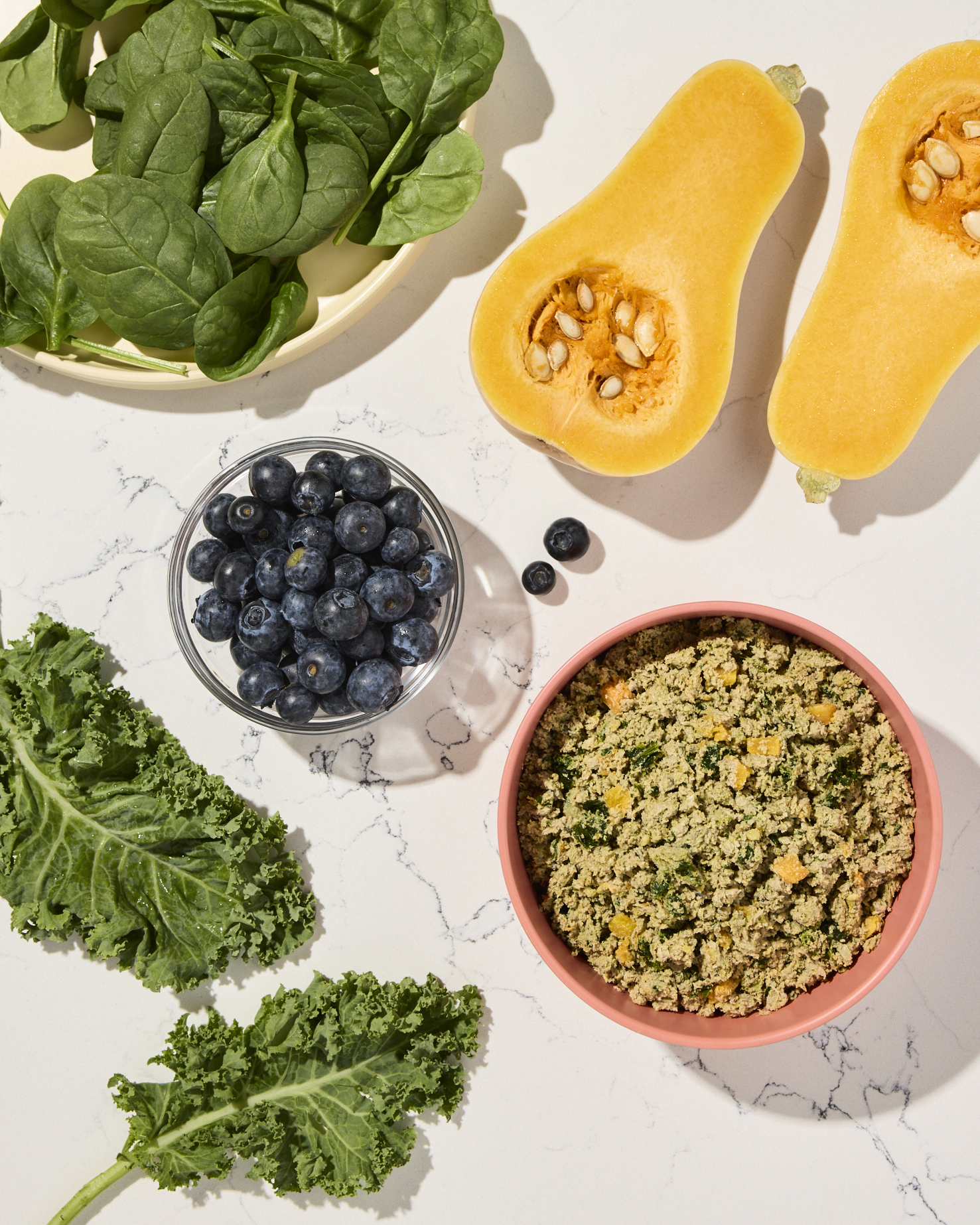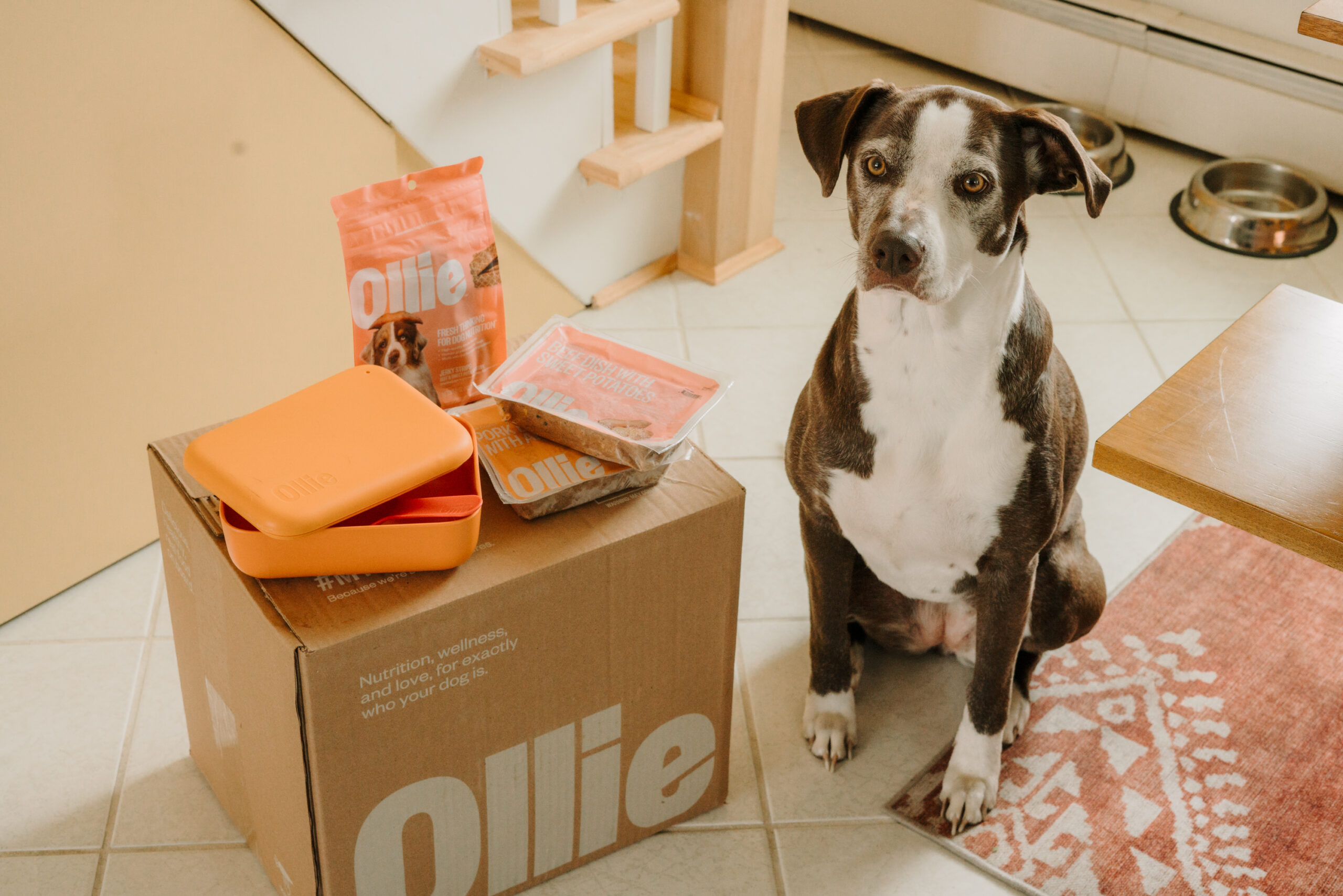Hey Ollie blog readers! We’re offering you an exclusive 60% OFF your starter box! Try now!
While an afternoon spa visit for a mani-pedi may be a luxurious treat for you, chances are your pup doesn’t share your delight in getting their nails tended to. No matter your pup’s feelings about having some attention paid to their feet, it is very important to their overall health that you make sure your pup is getting regular pedicures.

The importance of regular nail trims
First, a “quick” anatomy lesson. Your dog’s toenails have two parts – the inner quick and the outer shell. If you cut the nail too short and cut into the quick your dog will experience some discomfort and bleeding. This can lead to your dog dreading nail trims. If you aren’t feeling confident in your ability to trim your pup’s nails, you can ask an experienced, professional groomer or your vet to show you how.
Having your dog’s nails tended to professionally will usually only set you back about $10-15 for the service. Many groomers will offer this as a walk-in service, meaning you do not need to make an appointment!
Cutting your pup’s nails too short can cause issues like pain and infection, but putting off trims and letting nails get too long comes with some issues too. If your pups nails get too long, they can actually cause your pup’s feet to splay out and can even damage your pup’s tendons. This can make walking painful and can lead to your pup not getting enough exercise. This puts your pup at risk for other health issues including obesity.

What can I do if my dog hates nail trims?
It’s fairly common for your dog to dislike having their nails trimmed but fortunately, there are many things you can do to help. Keeping your dog’s stress level down when it comes to routine procedures like nail trimming, bathing and grooming is good for their overall health.
If you have a puppy or a younger dog, you can work on handling their feet regularly. Hold their paws up and touch each toe and nail. If your dog tolerates this well offer lots of praise and tasty treats. If your dog doesn’t like this go slowly. Continue to pair the behaviors with treats and praise.
Do not try to back your dog into a corner or force them to participate, this will only help your dog dislike having their feet handled. For extra motivation, consider an really special treat like cut-up hot dogs, low sodium deli meat, cheese, or anything else your pup can’t get enough of. You could even use some plain cooked salmon if your dog enjoys that.
Another great option is to use a nail grinder instead of clippers. This tool grinds the nail down and the user can trim the nail down more gradually. This may be superior to clippers where if you start too low, you can hit the quick. With a grinder, the dog may let you know if you are getting too short before the damage is done.
Finally, try to make sure your dog is relaxed and comfortable before you start clipping. You may have to break your dog maintenance tasks into a few sessions. Maybe a bath on Monday, nail trim on Tuesday, and brushing teeth on Wednesday.
If your dog is extremely upset about nail trimming talk to your vet, they may be able to give your dog something to help them relax or perform the nail trim under anasthesia if your pet is being put under for another procedure like a dental cleaning.

What else do I need to be concerned about when it comes to my dog’s nails?
Broken nails
If your pup’s nails are breaking when they walk or run, they can bleed which is painful and puts them at risk for infection. If you see this, reach out to your vet to determine the best course of action. They may recommend a bandage or bootie to keep cuts from re-opening. If your pup is constantly re-opening bleeding nails it will take a long time for them to heal. You may also need to give your pup some antibiotics to prevent infection. Give these medications as directed to help ensure the infection won’t come back.
Peeling nails
If your dog has weak, brittle or peeling nails, it could be a sign of malnutrition. Talk with your vet about what your dog is eating and get some recommendations for a dietary change or supplement to get your pup’s nails back to healthy.
Fungus or infections
If your pup’s nails seem swollen, painful or smelly, get to the vet as soon as you can, this could be due to a fungus or infection and you don’t want that to cause pain or spread!
What can I do to keep my pup’s nails healthy?
Ensure nails are kept neatly trimmed
We’ve already outlined the critical importance of keeping your pup’s nails trimmed. Make sure to complete nail trims regularly or get your pup on a good schedule with your vet or groomer. Pro tip: add a reminder to your calendar to check your pup’s nails once a month, maybe the same day you give them their monthly preventatives.
Treat any bleeding or infection
Bleeding or infected toenails can be very painful for your pup and can make walking challenging. If you see an issue seek treatment as soon as you can. Long term pain or infection can cause more serious issues for your pup and can be more costly to treat. You’ll want to keep any open wounds clean and dry. Follow your vet’s instruction carefully when treating wounds or infection.
Provide your pup with proper nutrition
If poor nutrition is the cause of your pup’s weak, brittle or peeling nails, talk to your vet about changing food or adding some supplements to your dog’s diet. Remember to follow your dog’s doctor’s instructions about how to properly transition or introduce something new. Moving too quickly can cause digestive distress including diarrhea or vomiting. Fresh, gently cooked foods like Ollie that are rich in Omega-3 fatty acids can help keep your pups nails (and coat) looking great.
See a vet if you notice something doesn’t look right
While we’ve covered the most common causes of issues with your pup’s nails and how to treat them in this article, you always want to rule out other serious issues including skin conditions, tumors, or other less common issues.
Your vet would rather take a look and tell your it’s nothing than have to give your the bad news that your pet has a serious issue. More serious or chronic conditions can be harder to treat, very expensive or even in very rare cases fatal – not the news you want to get from your pup’s provider. As the phrase goes, an ounce of prevention is worth a pound of cure!
The Ollie blog is devoted to helping pet parents lead healthier lives with their pups. If you want to learn more about our fresh, human-grade food, check out MyOllie.com.
Tagged As:

The nutrition your dog needs,
the food they want.

Enjoying our articles? Subscribe our Newsletters and get new articles directly to your inbox
You might also like
4 June 2025
5 MINS READ
How Can Fresh Dog Food Help with Weight Management?
Maintaining a healthy weight is one of the most important aspects of your dog’s overall health and longevity. Being overweight or underweight can result in health complications and conditions that…
23 May 2025
5 MINS READ
Why Fresh Dog Food Makes Happier, Healthier Dogs That Live Longer
Every pup parent wants their dog to live a long, happy life, and the path to a healthier, happier dog starts with what’s in their bowl. Recent research and expert insights reveal that fresh dog …
by Ollie Pets
23 May 2025
8 MINS READ
Why Human-Grade Ingredients Matter for Dogs with Health Issues
For dogs with allergies, sensitive stomachs, or other health concerns, a higher quality of life starts with food made from higher quality ingredients. The right nutrition can make a significant di…
by Ollie Pets







